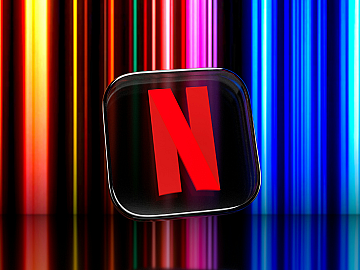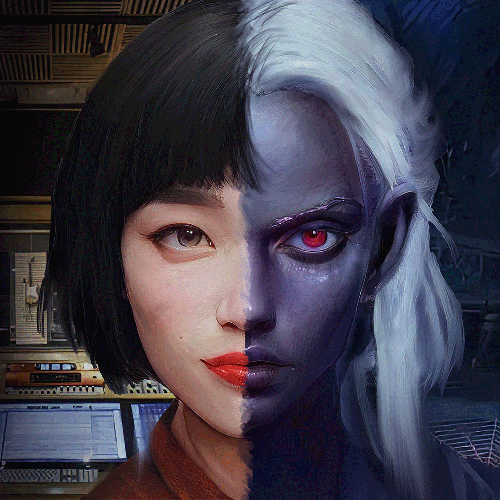Xīnnián kuàilè” (新年快乐) – Happy New Year!
It is Chinese New Year, and at Voquent, we want to celebrate it – and what better way to do that than to send some love to China's animation industry!
The Modern Chinese Animation Industry is still relatively young. The scope of Chinese animation – known as Donghua in China – has never fully encompassed a mature, global market. It stands in stark opposition to Eastern Animation's powerhouse in Japan and South Korea and the Western Goliath of Entertainment – the USA.
But this is changing.
The Chinese animation industry is in full swing and, in recent years, has shown signs of reinventing itself – and quickly. There is already an indication that China could become the third biggest animation industry within the next few years, and some believe it could be the biggest in the world within a decade.
Despite this incredible potential, Chinese animation is often not given the attention it deserves. But it is the reason many of the Chinese voice actors on Voquent wanted to become voice actors.
Our community cares about this industry's success, so let's take a quick look into the rich history, unfortunate decline, and the immensely bright future of China's animation industry. We'll also recommend the top Chinese animated films to watch.
The History of Chinese Animation
20th Century
Early in the 20th century, the world was gearing up for animated film to take its first significant steps. From the Lumiere brothers (1895) and Max Fleischer’s rotoscoping technology (1918), developments in cinematography made leaps forward for animation.
Chinese Animation joined in with the collective motion towards animated film. The pivotal Wan Brothers, Wan Laiming, Wan Guchan, Wan Chaochen and Wan Dihuan, stepped into the fray and pushed Chinese animation to the forefront.
These pioneers of China’s animation industry released their first animated short Uproar in the Studio (sadly lost to time) in 1926, two years before Disney’s seminal Steamboat Willie (1928).
Inspired by Disney’s Snow White, the Wan Brothers worked on the film Princess Iron Fan (1941), an adaptation of a sequence from the influential Journey to the West.
But the invasion of China and the subsequent outbreak of WWII slowed production significantly. The brothers toiled under threat of conquest to release the film. Despite the conditions, the Wan Brothers released the animated movie amid the war.
After the war, the Chinese Animation Industry flourished for many years, producing internationally recognised films like Why is the Crow Black-Coated (1955) and Havoc in Heaven (1965).
Many of these projects employed very early methods of voice-over techniques. Telling the story through an ethereal voice attached to a character's movement was revolutionary for storytelling at this time.
The stunted growth of the Chinese animation industry continued until the 1970s. However, by this point, Japanese animation had started to dominate the East, which continued through to the 2010s.
Chinese audiences lapped up Japanese anime; Akira (1988), Neon Genesis Evangelion (1995), Cowboy Bebop (1998). In comparison, the Shanghai Animation Studio put out a great deal of work in this period, but Chinese animation had undeniably fallen behind.
21st Century
After the introduction of the internet, things started to change. The internet opened up the production and consumption of animation beyond the limitations of broadcast television and cinema.
Throughout the 2000s, webcomics by indie animators became hugely successful. Animation students gained the ability to utilise advanced, sophisticated animation software in the form of Adobe Flash.
As a result, video hosting and streaming went mainstream. Flash animations grew popular, and Xiao Xiao by Zhu Zhiqiang even became a hit in the west through the hosting site Newgrounds.com.
Microblogging, comics and webcomics (Manhua) became ever more popular via comic sites like ac.qq.com. Decentralised knowledge and online education helped to invigorate more people to work in the industry. Young graduates have become influential innovators in this developing market – with fresh ideas and new methods.
Modern Chinese Animation
China's animation industry is amid a meaningful trend toward becoming a world bastion in artistry. With notable investments by companies like Alibaba and Tencent, it is a testament to the tremendous successes in China and internationally.
Although, the growing influence is at odds in some western countries due to the strict rules and influences that exist in Chinese media, perpetuated by the government.
Let's take a look at some of the top Chinese animated films to watch now:
Monkey King: Hero is Back (2015)

Monkey King: Hero is Back was a big hit. Created by Enlight Media, this film is not hand-drawn. Instead, it is a fully realised 3D CGI movie. The movie features an all-star voice actor cast for its Western release, with names like Jackie Chan attached to the project.
While China's voice cast is naturally native Chinese voice actors, the Western release also uses Asian actors for its English dub, demonstrating respect for its cultural heritage.
This plot follows the story of Sun Wukong, the all-powerful Monkey King. After angering the Gods, he is imprisoned by Buddha in an ice cage for 500 years, losing his godly powers and released by children, who become travelling companions to Sun Wukong.
Ultimately, The Monkey King must learn to overcome his fears and powerlessness, to do what is right for his newfound friends, even at the expense of his safety.
Based on the classic Chinese legend Journey to the West, an ancient story written in the Ming Dynasty in the 16th century. This story's roots run deep through Chinese mythology and religion — weaving it into China's collective culture.
Monkey King: Hero is Back was an immensely successful animation, garnering over ¥1 billion (more than $150 million). The film quickly became the most successful animated film in China at the time.
Big Fish & Begonia (2016)
Enlight Media’s seminal feature film, Big Fish & Begonia, originally began as a flash project during the Manhua craze.

The short was called Big Fish & Chinese Flowering Crabapple (2006) and featured a story that would eventually evolve into the fully cinematic animation Big Fish & Begonia in 2016. The movie is a hand-drawn 2D animation in a similar style to Japanese anime.
The movie features a girl named Chun, who participates in a coming-of-age ritual. This ritual has Chun transported from her magical world to humanity’s realm in a Red Dolphin form. She meets a young boy who reveres aquatic life during her visit, a boy who sacrifices his life when fishing nets trap her.
In her world, Chun restores his soul in the form of a Dolphin, which she must see through to adulthood, so the boy’s soul may return to the human realm. Chun must watch over the Dolphin despite human souls being forbidden in Chun’s world.
The movie, which features lesser-known Chinese voice actors, was a massive success, turning its ¥30 million crowdfunded budget into ¥510 million (almost $80 million)—a testament to the hunger among Chinese audiences for mature animated content.
Praised by critics and loved by audiences, the film was cited as a “new dawn in Chinese Animation” and was compared frequently to Japan’s groundbreaking vanguard in anime, Studio Ghibli.
Overall, this movie is a reflection of Chinese artistry forging a unique path. While it may draw inspiration from Studio Ghibli’s Spirited Away, the film has a flavour unto itself. In no way does it appear to be a mere facsimile of other animated works that came before it.
The movie utilised hand-drawn scenes with 3D CGI used to enhance the traditional animation style. The length of this film’s development (12 years altogether) showcases the passion behind the picture and the dedication of this audience.
Nezha (2019)

Another 3D CGI movie, loosely based on the 15th-century novel Fengshen Yanyi, Nezha, is about the character Nezha as he transforms from a rebellious kid into a dragon fighter. The film draws excellent inspiration from Chinese folklore and legends. Nezha must overcome stigma and prejudice and figure out where he fits in the world.
Nezha outperformed all other previous animated movies and became the highest-grossing animated movie in China. It ended up making an outstanding ¥4.8 billion ($742 million) — making it the second highest-grossing film in China.
The film has spawned a cinematic world that began with Nezha and continued in the 2020 3D CGI animation Jian Ziya which made ¥1.5 billion ($243 million).
Wish Dragon (2021)

Wish Dragon is a film that represents a big step in an international direction. Chinese and American production studios; Columbia Pictures, Sony Pictures Animation, Beijing Sparkle Roll Media Corp & Tencent collaboratively created it.
This co-produced project employs a significant Asian cast in both the Mandarin and the American releases. The future of collaborative projects may be a brilliant avenue for any Asian voice actors.
“Our goal in developing the project and building the Xiamen studio was to make world-class animation in China for China… and the world.”
The premise is a contemporary retelling of the “genie-in-a-bottle” tale with a Chinese style. In the place of the genie is a Dragon, and the story follows the concept and struggles that a boy may face when provided with the ability to use his dragon to make his wishes become a reality.
At the time of writing, the film has grossed ¥116 million ($18 million) across its box office release in China and the Netflix release in the U.S. This film represents a step toward international legitimacy.
Potential struggles and challenges
Despite Asia producing 90% of American animation, the status of Chinese animation meets some stigma internally.
One of these struggles can be found in the cultural stigmatisation of animation-based fields. The role of an animator is a job that is not considered stable or respectable.
There are hefty workloads and less-than-spectacular remuneration prospects. Young people make up most of the animation industry, a group that faces familial pressure to realign their future with jobs that hold higher gradations of social status.
This is compounded by the lack of prospects for students to learn about creating animated film in educational institutions. As highlighted by Lightchaser Animation Studio’s co-founder Yuan Ye:
“Although animation education in China has improved, when it comes to character effects or other technical skills, they don’t teach any of it in universities — you can only learn it on the job in a company environment.”
This puts pressure on the companies to fill in the gaps for young graduates. They must be taught on the job to accommodate the lack of pre-existing experience. This increases the time in training for the company, and it also increases the workload of the fresh employees in the company.

Another challenge to overcome is the concept that animation is made primarily for children. Despite Nezha and Big Fish & Begonia's success, the idea that animated films are for children permeates Chinese society.
These are stigmas that must be contended with if Chinese animation will realise its place beside the U.S and Japanese animation industries. As the industry grows, these prejudices will hopefully wash away. After all, similar stigmas still exist in Western society, just to a lesser degree.
What does this mean for Chinese Voice Actors?
The challenges that animators face in Chinese societies translate to voice-over talents as well. Chinese people may struggle to become voice actors due to societal pressure, stigma, and prejudice.
Voice acting is not viewed as a 'proper' profession. Parents or peers may convince aspiring voice actors to pursue a more traditional career or relegate their voice work to part-time status.
Conclusion
This is only the beginning, and there are more collaborative projects on the horizon, such as China and Japan’s renowned studio Toei Animation, responsible for Sailor Moon, Dragonball, and One Piece.
The Chinese Animation Industry must remember that China has a unique and powerful culture in and of itself; it is worthy of individual style and presentation. Learning and adapting Japanese and Western styles will not suffice.
Tales like Monkey King, Big Fish & Begonia, and Nezha differentiate Chinese Animation, and it's good to be different. These are uniquely Chinese, not copies or replications. Embodying a solely Chinese style will help define this country’s role in the world of animation.
China is evolving its creative industries to challenge dogma on the global stage. It will showcase the cultural importance of its ideas and mythology. But the country needs to grow and shift to forgo censorship and learn to provide a space for non-stigmatised animation professionals.
We hope you liked this piece! If you have any thoughts, ideas or if you just want to tell us your favourite Chinese animation: hit us up @voquent on Twitter.
Until next time, Gōngxǐ fācái (恭喜发财)!
Listen to Voice-Over Talents for Animations
Sometimes we include links to online retail stores such as Amazon. As an Amazon Associate, if you click on a link and make a
purchase, we may receive a small commission at no additional cost to you.


















